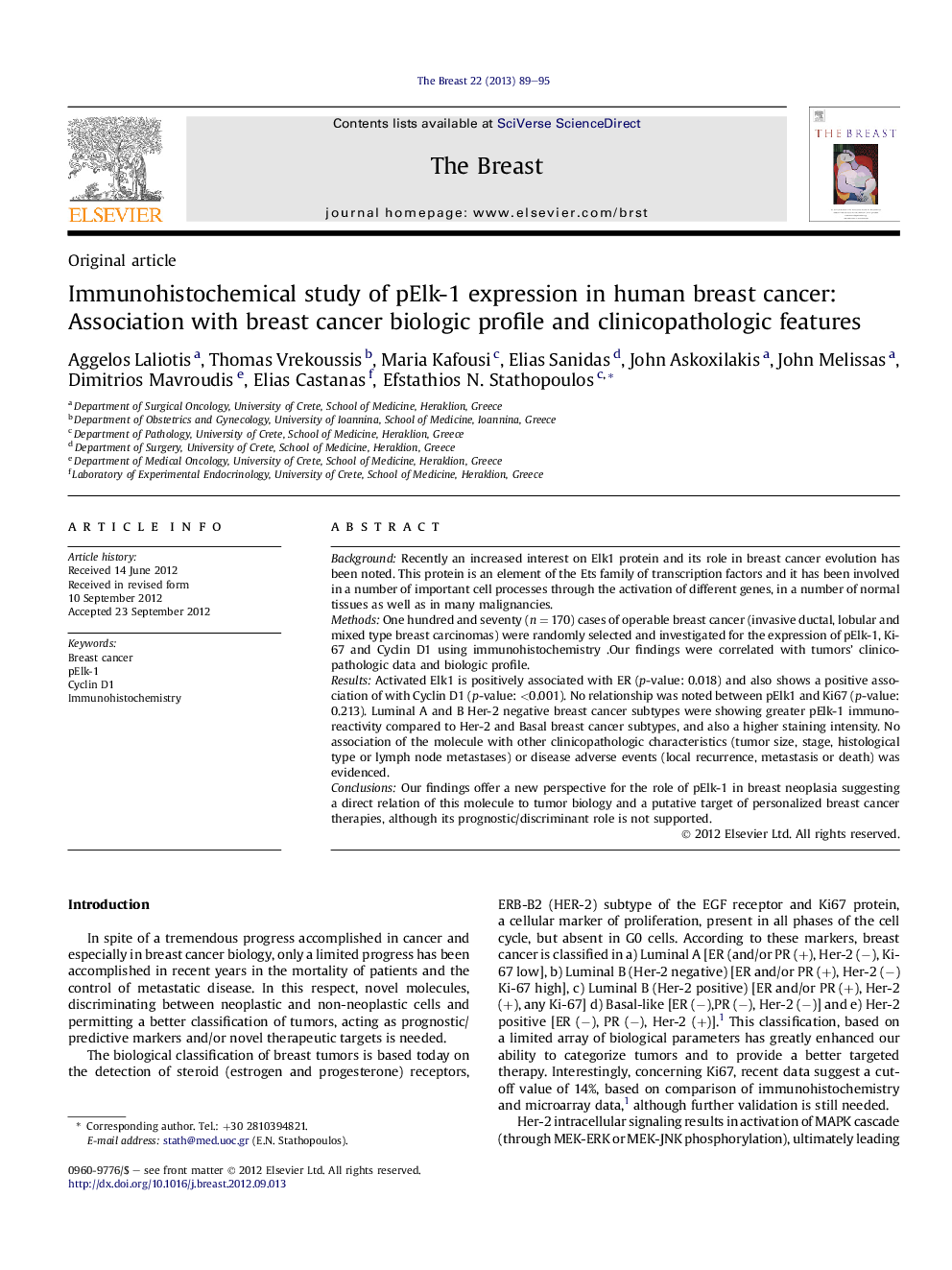| Article ID | Journal | Published Year | Pages | File Type |
|---|---|---|---|---|
| 3908474 | The Breast | 2013 | 7 Pages |
BackgroundRecently an increased interest on Elk1 protein and its role in breast cancer evolution has been noted. This protein is an element of the Ets family of transcription factors and it has been involved in a number of important cell processes through the activation of different genes, in a number of normal tissues as well as in many malignancies.MethodsOne hundred and seventy (n = 170) cases of operable breast cancer (invasive ductal, lobular and mixed type breast carcinomas) were randomly selected and investigated for the expression of pElk-1, Ki-67 and Cyclin D1 using immunohistochemistry. Our findings were correlated with tumors' clinicopathologic data and biologic profile.ResultsActivated Elk1 is positively associated with ER (p-value: 0.018) and also shows a positive association of with Cyclin D1 (p-value: <0.001). No relationship was noted between pElk1 and Ki67 (p-value: 0.213). Luminal A and B Her-2 negative breast cancer subtypes were showing greater pElk-1 immunoreactivity compared to Her-2 and Basal breast cancer subtypes, and also a higher staining intensity. No association of the molecule with other clinicopathologic characteristics (tumor size, stage, histological type or lymph node metastases) or disease adverse events (local recurrence, metastasis or death) was evidenced.ConclusionsOur findings offer a new perspective for the role of pElk-1 in breast neoplasia suggesting a direct relation of this molecule to tumor biology and a putative target of personalized breast cancer therapies, although its prognostic/discriminant role is not supported.
